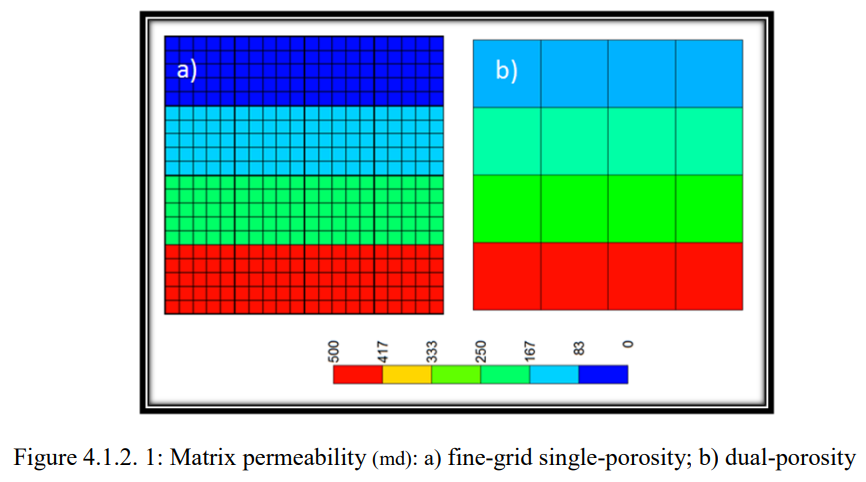天然裂缝性储层(NFR)模拟极其艰巨且具有挑战性。NFR模拟最重要,最困难的事情是通过形状因子对基质与裂缝之间的流体交换进行准确计算。本博士论文通过定义合适的瞬态基质与裂缝形状因子公式,更好地理解双重孔隙系统中裂缝和基质块体之间的物质交换,提出了裂缝与基质的非等温流体交换方法,用于描述天然裂缝油藏热采模拟的多相流系统。开发了一个MATLAB程序,并和CMG-STARS耦合计算瞬态形状因子(TSF)得出处理形状因子的最合适方法,以捕获NFR中非等温流体流动的相关特征。本研究的结论是,当使用双孔模型,需要瞬态形状因子来准确模拟NFRs热采过程。
Transient Shape Factors for Thermal Flow Simulation in Fractured Reservoirs
ABSTRACT
The simulation of naturally fractured reservoirs (NFRs) is an extremely daunting and challenging task. The most important and difficult aspect of modeling a naturally fractured reservoir is the accurate estimation of the fluid exchange between matrix and surrounded fractures, which is modeled via a shape factor.
The main focuses of this dissertation are the characterization and understanding as to how shape factors are utilized for modeling non-isothermal, fracture-matrix fluid exchange in fractured reservoirs. The intention of this research, therefore, is to achieve a better understanding of the matter exchanges between fractures and matrix blocks in a dual porosity system by defining an appropriate transient matrix-fracture shape factor formulation that accounts for a multiphase flow system in thermal reservoir simulation of naturally fractured reservoirs. A novel and more general technique are developed for the exchange of fluids between the matrix blocks and the surrounded fractures. The concept of a new transient shape factor is introduced for non-isothermal, dual-porosity models and validated against the most current shape factor formulations. In this study, the CMG STARS simulator is used to estimate and validate the proposed transient shape factor. A MATLAB code is developed and coupled with the CMG STARS to compute transient shape factor (TSF). This new technique describes the most appropriate way of treating a shape factor to capture the pertinent features of non-isothermal fluid flow in NFRs. A robust transformation function (T.F) formulation is developed between the fractures and the matrix for a better representation of a dual-porosity system in thermal recovery. The proposed transient shape factor (TSF) model is validated against a fine grid single porosity model and an historical field data to confirm the model capability for reproducing accurate physical processes and recovery mechanisms. The results clearly demonstrate that a constant value of the shape factor (e.g., Kazemi’s formulation) cannot be used to predict the overall performance in dual-media systems due to invalid assumptions. The conclusions from this study clearly show that a suitable and accurate transfer transient shape factor is required for an appropriate modeling of a thermal recovery process in NFRs when using dual-porosity formulations.


